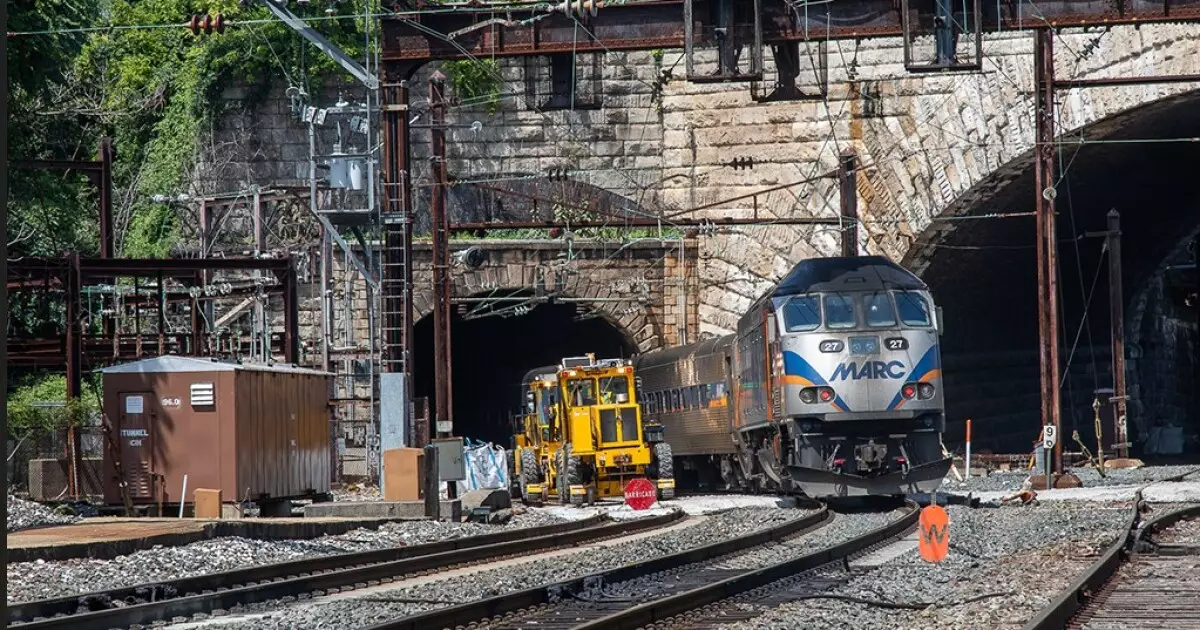The $6 billion initiative to replace the Baltimore-Potomac tunnel has emerged as a focal point of scrutiny due to questionable planning and management practices, according to a recent audit by Amtrak’s inspector general (IG). This critical infrastructure project, which aims to alleviate long-standing bottlenecks in one of the busiest rail corridors in the Northeast, has exhibited signs of distress early in its development phase. The issues highlighted in the report not only underline the current challenges faced by Amtrak but also set a concerning precedent for the management of large-scale infrastructure projects in the future.
One of the major issues plaguing the tunnel replacement project lies in its initial management structure. According to the IG report, the project was primarily assigned to a single individual who lacked the adequate support and resources required for an undertaking of this magnitude. The relatively narrow management framework has been flagged as a significant contributor to the delays and inefficiencies that could lead to potential cost overruns as the project progresses. The recommendation to bolster staff and refine the management approach is a step in the right direction; however, it raises concerns about the effectiveness of such measures when implemented post-factum.
Amtrak’s decision to utilize a “delivery-partner” contract—aimed at incorporating contractor expertise early on for better design and construction planning—has not functioned as intended. The contractor was not integrated into the project until last year, forcing an already overstretched internal team to juggle multiple, intricate commitments without essential guidance. This misalignment in strategy highlights the pitfalls of poor initial planning, where reliance on internal resources was misconstrued as adequate readiness for such a complex project.
As the project now nears significant construction milestones, the Inspector General emphasizes that the requisite planning has not been sufficiently completed. This lack of preparation poses a heightened risk of cost overruns and delays—issues that have historically plagued large infrastructure projects in the United States. The audit suggests that a structured approach to planning would not only improve oversight but also mitigate risks substantially.
With an estimated completion date set for 2035, stakeholders are left to wonder whether ameliorating the project’s current shortcomings can realistically meet this timeline. The vast financial commitments involved—$4.7 billion in federal grants and another $1.3 billion pledged by the state of Maryland—further complicate the situation, as any mismanagement could jeopardize not only the project’s success but also the sustained financial support it desperately requires.
The existing Baltimore-Potomac tunnel infrastructure, over 150 years old and characterized by tight turns that force trains to slow to just 30 miles per hour, has been cited as a critical bottleneck affecting rail traffic between Washington, D.C., and New Jersey. The inability to optimize transit speeds and capacity has long troubled rail operators, and the consequences are increasingly evident in service levels.
Moreover, the project will transform the existing tunnel into the Frederick Douglass Tunnel, a symbolic renaming phase enmeshed with broader themes of social progress. However, the effectiveness of these symbolic gestures is undermined when operational realities, shaped by lackadaisical planning and management inefficiencies, take center stage.
Compounding the existing issues are ongoing political challenges surrounding Amtrak funding, particularly along the Northeast Corridor—one of the busiest rail routes in the United States. Recent attempts by Congressional Republicans to cut financial support rate provoke heated debates about funding allocations. Targeting projects like the Gateway project and Amtrak’s corridor funding has drawn both scrutiny and public opposition, notably from East Coast Republican representatives. In November, a proposed 92% cut to Amtrak’s northeast corridor budget exemplifies the widening political fissures over rail funding.
In a landscape where both infrastructure needs and financial constraints are at odds, the planning and execution of projects like the Baltimore-Potomac tunnel replacement are likely to garner increased attention. Ultimately, the success of Amtrak’s ambitious endeavors demands not just improved accountability and management structures but also a forthright dialogue about sustainable funding in the face of competing political interests.
As this narrative unfolds, the outcomes of the Baltimore-Potomac tunnel replacement initiative will reflect not only on Amtrak’s operational capacity but also on the nation’s commitment to addressing its aging infrastructure and extensive transportation needs in a rapidly changing world.

